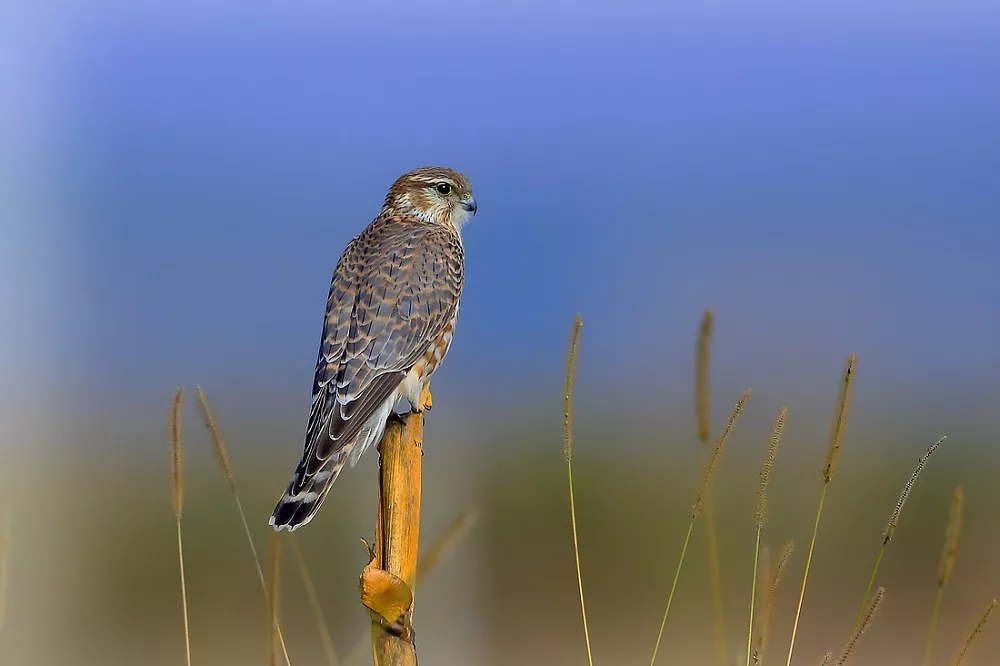The Merlin Falcon, also known as the pigeon hawk, is a small but formidable bird of prey that is widely distributed across North America, Europe, and Asia. This fascinating raptor is renowned for its speed, agility, and hunting prowess, making it a popular subject among bird watchers, falconers, and wildlife enthusiasts. In this article, we will explore the characteristics, behavior, and conservation status of the Merlin Falcon.
- Classification and Physical Characteristics
The Merlin Falcon belongs to the family Falconidae, which includes other falcons, kestrels, and caracaras. Its scientific name is Falco columbarius, which derives from the Latin word for pigeon or dove, reflecting its preferred prey. The Merlin Falcon is a small bird of prey, measuring 25-35 cm in length and weighing around 150-250 g, with a wingspan of 50-70 cm. It has a compact and muscular body, short wings, and a long tail that helps it maneuver in flight. The male and female Merlin Falcons differ in size and coloration, with the male being smaller and more blue-grey in color, while the female is larger and more brownish.
- Habitat and Distribution
The Merlin Falcon is a highly adaptable bird that can thrive in a variety of habitats, including forests, grasslands, tundra, and coastal areas. It has a wide distribution range that spans across the Northern Hemisphere, from the Arctic tundra to the subtropical regions of Asia. In North America, the Merlin Falcon breeds in Alaska, Canada, and the western United States, and winters in the southern United States, Mexico, and Central America.
- Behavior and Diet
The Merlin Falcon is an opportunistic predator that feeds mainly on small birds, such as sparrows, finches, and warblers, but also preys on insects, mammals, and reptiles. It hunts by swooping down on its prey from a high perch or in mid-air, using its speed and agility to catch its target in flight. The Merlin Falcon is one of the fastest birds in the world, capable of reaching speeds of up to 80 km/h in level flight and up to 100 km/h in a dive.
- Breeding and Reproduction
The Merlin Falcon is a solitary and territorial bird that forms monogamous pairs during the breeding season, which starts in late April and lasts until July. The male performs a courtship display that involves aerial acrobatics and calling, to attract a female mate. The pair builds a nest together, usually in a tree cavity or on a cliff ledge, using twigs, grass, and feathers. The female lays 3-5 eggs, which she incubates for around 30 days, while the male provides food and defends the territory. The chicks are born helpless and dependent on their parents for food and protection, and fledge after around 25-30 days.
- Conservation Status
The Merlin Falcon is considered a species of least concern by the International Union for Conservation of Nature (IUCN), due to its widespread distribution and stable population trend. However, like many birds of prey, the Merlin Falcon is vulnerable to habitat loss, pesticide contamination, and illegal hunting. In some regions, the Merlin Falcon has been affected by the decline of its prey species, such as songbirds, which are threatened by habitat fragmentation and climate change. Conservation efforts aimed at preserving the Merlin Falcon and its habitat include the protection of nesting sites, the promotion of sustainable land use practices, and the regulation of pesticide use.
The Merlin Falcon is a fascinating and highly adaptable bird of prey that plays a vital role in maintaining the ecological balance of its habitat. Its speed, agility, and hunting prowess have made it a popular subject among bird watchers


 Facebook
Facebook  Instagram
Instagram  Youtube
Youtube 